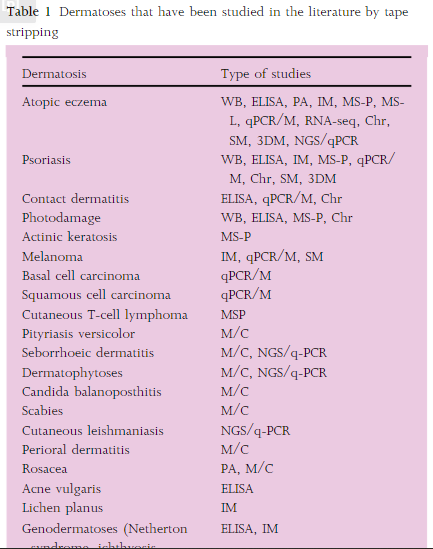Can You Biopsy the Skin with a Piece of Tape? Yes! What?
DermTech
Just when you think you know everything about dermatology from watching Pimple Popper, I’m here with something new. Skin biopsy using a piece of tape.
Let me clarify some things:
1- It’s not really a “biopsy” because true skin biopsy includes cutting the skin. It is more accurately called sampling in my opinion.
2- It only works for certain things. At this time, it is ONLY used to try to differentiate a normal mole from a melanoma.
3- It’s REALLY cool, but only works for one thing.
Patients in the know have been asking me about this company from an investment standpoint for a while now. DermTech is the first company to offer this type of test with great, real, scientific studies to support their new test. Here’s the answer for all you inquiring minds.
How Is It Done? The test uses four pieces of tape to sample the skin. The skin is cleansed with alcohol, prepped to sort of loosen up the outer layer of skin, tape is applied to the skin and then removed. The tape is placed on a sample card and the process is repeated 4 times. The sample cannot include hair or blood, and the test cannot be done on palms, soles, or mucous membranes (mouth, moist areas of genitalia).
How Does It Work? The tape picks up dead skin cells from the outermost layer of the skin, the stratum corneum. We mail the pieces of tape to the lab, and they do a genetic analysis on the collected skin cells. What is collected with the sample is RNA. RNA is converted into DNA in the lab by a process called reverse transcriptase. The DNA gene expression is analyzed for two primary genes that have been shown to be predictive of melanoma, Linc and PRAME. More recently, they have begun testing for another gene as well called TERT.
How Long Does It Take to Get the Results Back? They say, 3-5 business days, so realistically, about 10 days.
How Accurate Is it? Pretty good! The Negative Predictive Value or Sensitivity is 91%. That means it has a 91% chance of accurately determining that there is no melanoma. The Positive Predictive Value or Specificity is 69%, meaning that if the test comes back positive, it has a 69% chance of showing melanoma on actual biopsy of the skin. The recent addition of TERT to the assay has further increased the sensitivity to 99% and specificity.
What if the test comes back suspicious for melanoma? Then we will biopsy it the old-fashioned way and send a copy of the DermTech assay to the pathologist with your specimen.
What if the test comes back NOT suspicious for melanoma? Then we will continue routine skin exams and monitoring the spot with photography.
Does My Insurance Cover It? Maybe yes, maybe no. However, as of September 2021, there should not be any out-of-pocket cost for patients even if insurance does not cover it.
When Will This Be Recommended? My opinion would be those extremely afraid of procedures, those wanting to avoid scarring in a cosmetically sensitive area, lesions that have recurred after a previous benign biopsy, and very large lesions. Remember this is ONLY to determine a normal mole from a melanoma. It DOES NOT detect other types of skin cancer.
Is this being investigated for other skin diseases? Yes, the table below from Hughes et al., lists several skin problems that have been evaluated using tape stripping. The most common other condition is atopic dermatitis in children.

The cool thing about this is that hopefully it will work well for other cancers and skin conditions in the future. Finding and diagnosing Melanoma can be difficult. It is a life-threatening type of cancer, so I am happy to have another way of detecting this cancer for my patients.
To learn more about Melanoma and other related topics, see the links below.